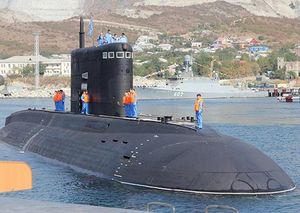In a world where the movement of people and goods shapes the fortunes of nations, recent high-level meetings in Montreal and Kazakhstan have signaled a fresh wave of ambition and collaboration across the transport and logistics sectors. From Morocco’s bid to deepen aviation ties with Saudi Arabia, to Kazakhstan’s embrace of cutting-edge Chinese railway technologies, the drive for innovation and partnership is unmistakable—and the stakes, enormous.
On September 23, 2025, the city of Montreal played host to a pivotal conversation between Morocco’s Minister of Transportation and Logistics, Abdessamad Kayouh, and his Saudi counterpart, Saleh bin Nasser Al-Jasser. Their meeting, held during the 42nd session of the International Civil Aviation Organization (ICAO) Assembly, was more than just a diplomatic courtesy. According to Morocco’s Press Agency (MAP), the two ministers zeroed in on ways to deepen bilateral cooperation in civil aviation, with a particular focus on improving the transport of pilgrims for the Hajj and Umrah—an issue that resonates deeply for both countries given their roles in the Islamic world.
Minister Kayouh didn’t mince words about Morocco’s intentions. As reported by MAP, he "noted Morocco’s determination to deepen cooperation with Saudi Arabia in all areas of civil aviation, highlighting the progress Morocco has made in regulatory compliance and in continuously monitoring the national air safety system." This emphasis on safety and regulatory rigor, Kayouh argued, is part of Morocco’s broader commitment to sustainable development and the highest standards in aviation.
The timing of the meeting was no accident. Morocco’s delegation, led by Kayouh, is representing the kingdom at the ICAO Assembly from September 23 to October 3—a gathering that brings together aviation leaders from around the globe. The Ministry of Transportation and Logistics has made it clear that Morocco’s participation is not just symbolic. The country intends to present its candidacy for the ICAO Council, signaling a desire to play a more active and constructive role in global civil aviation governance. In the words of the ministry, this move "demonstrates [Morocco’s] ongoing commitment to sustainable development and aviation safety, as well as its willingness to strengthen international cooperation in this strategic sector."
As the assembly unfolds, Morocco’s ambitions are being watched closely, not just in North Africa and the Middle East, but by aviation stakeholders worldwide. The focus on the transport of pilgrims is especially timely, given the ever-growing demand for efficient, safe, and affordable travel for millions of Muslims each year. For Morocco and Saudi Arabia, both key players in facilitating Hajj and Umrah, improving this vital link is as much about diplomatic goodwill as it is about operational excellence.
Meanwhile, some 9,000 kilometers away in Kazakhstan, another story of transport innovation is taking shape—this time with a distinctly technological twist. On September 24, 2025, Madiyar Sultanbek, Deputy Chairman of the Board of JSC "NC "KAZAKH INVEST," sat down with a delegation from the China Association for Overseas Industrial Development, led by Director Yan Qinglin. The meeting, as reported by Kazinform News Agency, was all about exploring the prospects for implementing innovative technologies in Kazakhstan’s transport sector.
Yan Qinglin didn’t come empty-handed. He presented a suite of innovative engineering solutions for both railway and urban infrastructure, with a spotlight on modern Chinese trenchless technologies. These methods, which use horizontal directional drilling, allow for the installation of pipelines and utility networks with diameters ranging from 60 centimeters to a whopping 10 meters—all without the need for excavation, asphalt removal, or disruption of traffic. For cities grappling with congestion and aging infrastructure, this is nothing short of revolutionary. As Yan explained, such technologies are "particularly important for megacities and areas with high traffic loads."
But the conversation didn’t stop at pipes and cables. Special attention was given to the prospects of constructing dedicated high-speed railway lines for intercity and suburban passenger transport. The Chinese delegation made it clear that China continues to hold a leadership position globally in high-speed railways, and, crucially, is ready to share its accumulated experience and technologies with Kazakhstan. This offer comes at a time when Kazakhstan is positioning itself as a key player on the Trans-Caspian International Transport Corridor (TITC), a vital artery connecting Asia and Europe and closely linked to China’s "Belt and Road" initiative.
Yan Qinglin put it succinctly: using the TITC could allow goods to reach Europe overland three to four times faster than traditional sea routes. That’s a game-changer for global trade. Sultanbek, for his part, was equally bullish about the future. He noted that cargo transportation along the corridor increased by 60% last year, reaching 4.5 million tons, and is expected to soar to 10 million tons in the coming years. "Kazakhstan is ready to provide comprehensive support for projects related to the development of the TITC," Sultanbek emphasized, underscoring the country’s commitment to becoming a linchpin of Eurasian logistics.
The meeting in Kazakhstan wasn’t just a two-person affair. Representatives from some of China’s biggest players—including China Railway Construction Corporation, China National Chemical Engineering Group Corporation, and China Energy Engineering Corporation—were in attendance, signaling a broad and deep interest in partnership. Both sides confirmed their readiness to deepen the relationship and agreed to continue substantive discussions on joint projects in the transport and energy sectors. As the Kazinform News Agency noted, "strengthening cooperation along the Trans-Caspian route will open new opportunities for expanding trade and industrial collaboration between Kazakhstan and China."
For all the technical details and diplomatic niceties, what’s striking about these parallel stories is the sense of urgency and ambition. Whether it’s Morocco seeking a seat at the ICAO Council table, or Kazakhstan and China fast-tracking high-speed rail and trenchless infrastructure, the message is clear: the future of transport belongs to those who innovate—and those who cooperate.
There are, of course, challenges ahead. The logistics of moving millions of pilgrims safely and efficiently, the complexities of cross-border infrastructure projects, and the need to balance economic growth with sustainability—all these issues loom large. But as this week’s meetings show, the willingness to tackle these challenges head-on is alive and well in the corridors of power from Montreal to Astana.
As global trade routes shift and technological frontiers expand, the partnerships forged in 2025 may well define the transport landscape for decades to come.



